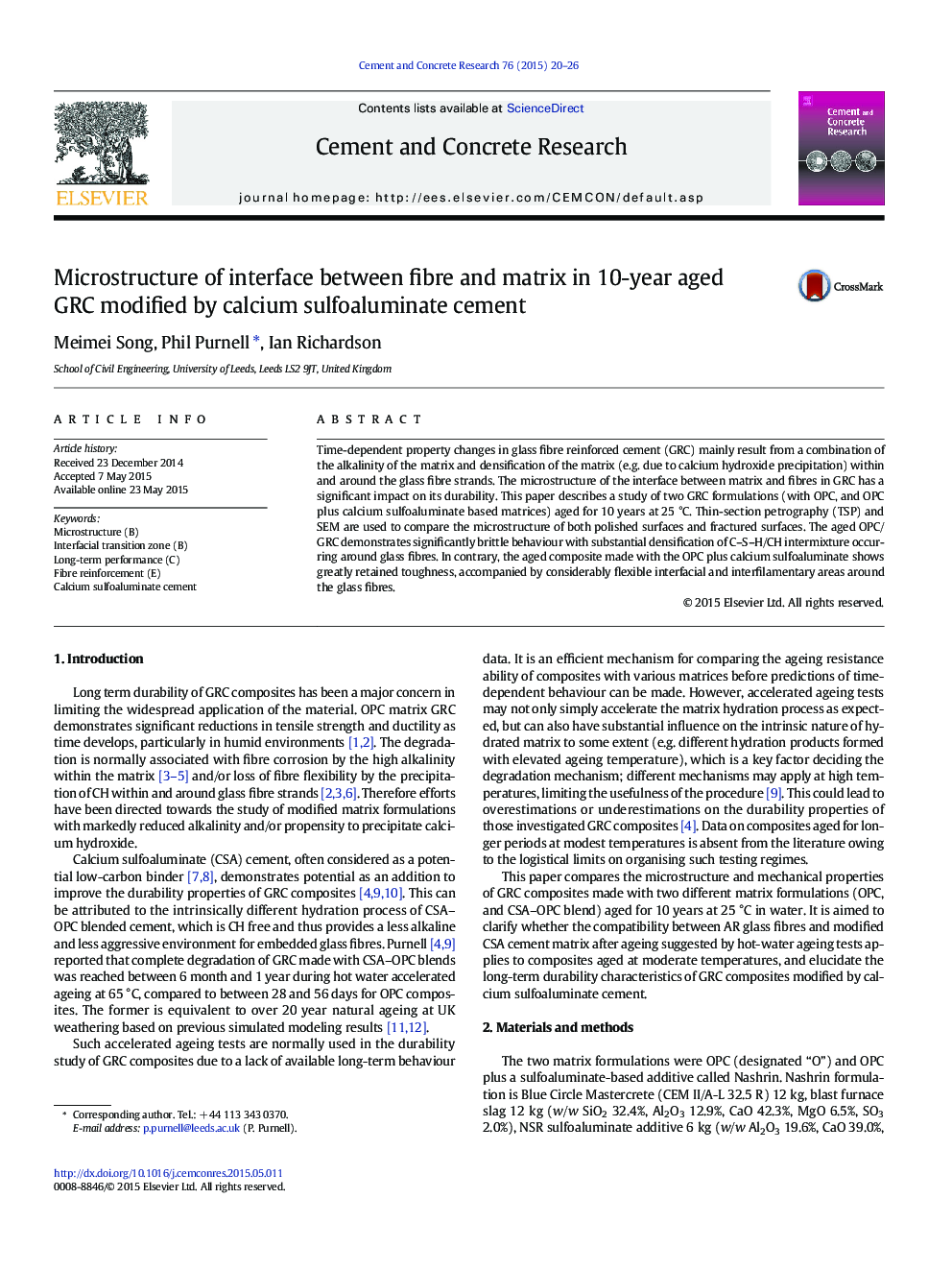| Article ID | Journal | Published Year | Pages | File Type |
|---|---|---|---|---|
| 7885301 | Cement and Concrete Research | 2015 | 7 Pages |
Abstract
Time-dependent property changes in glass fibre reinforced cement (GRC) mainly result from a combination of the alkalinity of the matrix and densification of the matrix (e.g. due to calcium hydroxide precipitation) within and around the glass fibre strands. The microstructure of the interface between matrix and fibres in GRC has a significant impact on its durability. This paper describes a study of two GRC formulations (with OPC, and OPC plus calcium sulfoaluminate based matrices) aged for 10 years at 25 °C. Thin-section petrography (TSP) and SEM are used to compare the microstructure of both polished surfaces and fractured surfaces. The aged OPC/GRC demonstrates significantly brittle behaviour with substantial densification of C-S-H/CH intermixture occurring around glass fibres. In contrary, the aged composite made with the OPC plus calcium sulfoaluminate shows greatly retained toughness, accompanied by considerably flexible interfacial and interfilamentary areas around the glass fibres.
Keywords
Related Topics
Physical Sciences and Engineering
Engineering
Industrial and Manufacturing Engineering
Authors
Meimei Song, Phil Purnell, Ian Richardson,
